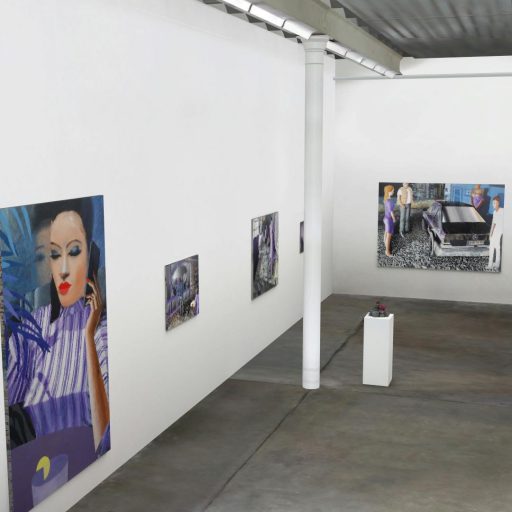

Loading...


The exhibition at the Museum of Fine Arts – Hungarian National Gallery is not intended to review every part of his legacy in a monographic way or to “find a place” in art history for everything he left behind after his tragically early death. The aim is not to present his life, in the tried-and-tested pattern, as an organic progression from the “early” to the “mature” to the “late” stages of his career. Even the works to be displayed have been selected according to unconventional criteria – preparations are under way not for a ceremonial memorial exhibition, but for a provocative and exciting contemporary event that sparks debate.
The exhibition is divided into 19 sharply separate sections, distinguished from each other by the colour-coded walls and the clearly bannered slogans. They are connected neither chronologically nor logically – the arrangement makes no attempt to establish any order of importance, or to guide visitors along a fixed path, but is rather designed to encourage labyrinthine crossings and passages.
Each module concentrates on one characteristic aspect of Kazovszkij’s art: one example is his strong tendency towards the FETISHISATION of certain objects, persons and works of art. This desire to occupy and possess things also reveals the emotional and temperamental dependency of the subject: in the end, his own feeling of loss lends his idols the power that takes him under their spell. The promise of a spectacle is held out by the presentation of a few famous paintings, statues, faces, texts or film excerpts that he himself was a fan of. The theme of building, worshipping and destroying fetish objects is not only central to his paintings and installations, but also to his performance art, as seen in countless motifs, ceremonies and actions. Kazovszkij’s art has a profound THEATRICALITY: pointing at things expressively, and exposing and performing motifs in an eye-catching way is a hallmark not only of his stage works but also his paintings.
One of the highlights of the exhibition is expected to be the reconstruction of the monumental ensemble of stage and costume of his Dzhan Panopticons, celebratory games repeated for more than thirty years, in which he used to play the main role. The absence of El Kazovszkij and his live models is replaced with video recordings from the time and video interviews with former participants.
A separate section deals with El Kazovszkij’s PRIVATE MYTHOLOGY: his recurring guiding motifs – reminiscent of Wagner’s – replete with cultural/historical references, create an almost monolithic system. His mythology is also a mirror for the problem of his SEXUAL IDENTITY, which every honest presentation of El Kazovszkij, as an open transsexual, must discuss independently – tactfully, but specifically – along with a discussion of the classic male roles he acquired from Russian culture.
Likewise, we cannot ignore the former avant-garde context in which he began, the Hungarian underground COUNTERCULTURE of the 1970s and 1980s – the appearance of that intimate, welcoming circle and warped publicity, without which he would not have come into being, but in which he was also necessarily misunderstood.
The final section diverts attention to El Kazovszkij’s visionary PAINTING – the pictures themselves, which – through the intensive and passionate counterpoising of colours, spaces, sizes and shapes – drag viewers in with the powerful pull of their magnetism, making them a living witness to the unveiling of their secrets.







